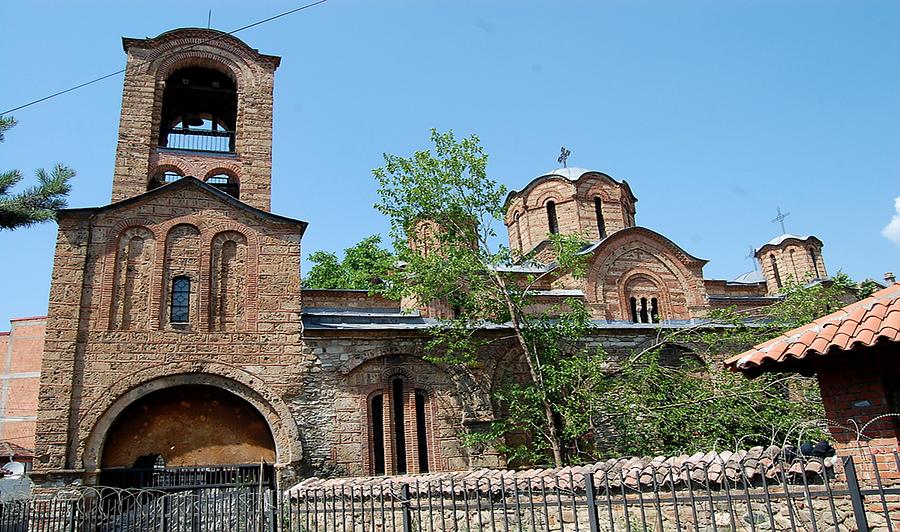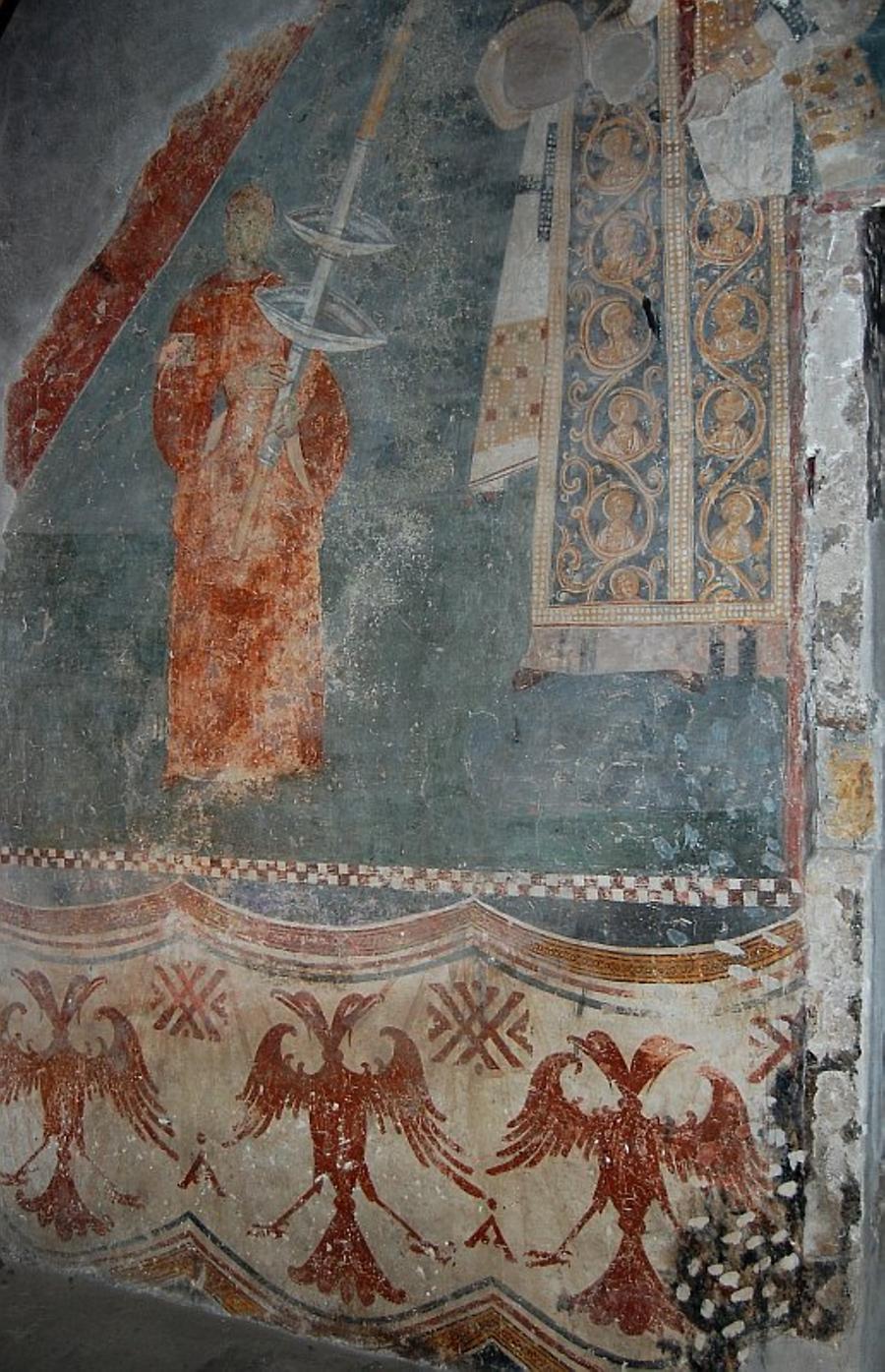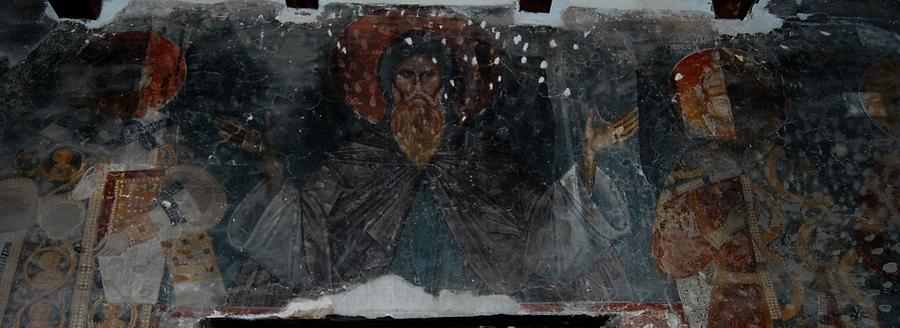The Church of Holy Virgin of Levis#
by Marija Šegan, Danijela Pantelić and Sandra VujoševićThe Church of the Holy Virgin of Ljeviš is located in the old part of the town of Prizren 42.2267971,20.7 . The Church of the Holy Virgin of Ljeviš was founded in the 1306/7 by the Serbian king Milutin of Nemanjić (1282 – 1321). It was built on the foundation of an older cathedral church from the 13th century and Byzantine church from the 10th century. The church was the seat of the Prizren Bishop and Prizren Metropolitan until the 18th century. In the 18th century the Ottomans have converted the church into a mosque, and they have used it for their religious needs. In one moment, in the 20th century, the Orthodox church was renovated, but in 2004, during the March pogrom (17.03.2004), it was set on fire and seriously damaged. In 2006 it was declared as UNESCO World Heritage Site.

Photo made available by Mathematical Institute SANU, Belgrade, under CC BY-SA 3.0
The restoration and conservation works of the Church of the Holy Virgin of Ljeviš were carried out during the fifties of the 20th century. The church presents a three-nave building, with the base in a shape of a cross. Above the central nave there are five domes, and the central dome rests on four pillars. On the east side of the church there are three altar apses, and on the west there is the narthex with an open porch. The narthex is topped by a bell-tower.

Photo made available by Mathematical Institute SANU, Belgrade, under CC BY-SA 3.0
The church was painted in the period of 1310 – 1313 by the protomaster Astrap of Salonika and his pupils. Especially important are the portraits in supernatural size of the King Milutin and other representatives of the Nemanjić dynasty. There is also, the very interesting and detailed fresco of the Last Judgement, in which the painters showed their exceptional artistic quality. The wall paintings were, unfortunately, seriously damaged in the 18th century, when the Ottomans have painted over the frescoes, as well as in 2004, after the arson.

Photo made available by Mathematical Institute SANU, Belgrade, under CC BY-SA 3.0

Photo made available by Mathematical Institute SANU, Belgrade, under CC BY-SA 3.0
Sources:#
- Nenadović S. (1963). Bogorodica Ljeviška. Beograd.
- Živković B. (1972-73). Konzervacija i restauracija oštećenih fresaka u crkvi Bogorodice Ljeviške u Prizrenu. Starine Kosova, VI-VII (Priština 1972-73), 229-243.
- Panić D., & Babić G. (1975). Bogorodica Ljeviška. Beograd.
- Todić B. (1998). Srpsko slikarstvo u doba kralja Milutina. Beograd